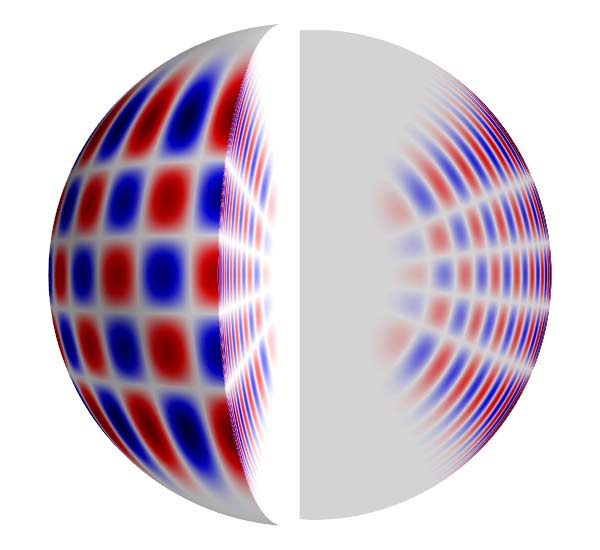helioseismology

The figure above shows one set of standing waves of the Sun's vibrations. Red and blue show element displacements of opposite sign.
Helioseismology is the study of the Sun's interior by measuring oscillations of the surface caused by sound waves that travel through the Sun at different depths. Large numbers of distinct, resonating sound waves can be detected by the Doppler shift they cause in spectral lines emitted at the Sun's surface. The periods of these waves depend on their propagation speeds and the depths of their resonant cavities (similar to the lengths of organ pipes that produce different notes). Data on many resonant modes, with different cavities, serve as a precise probe of the temperature, chemical composition, and motions, from just below the Sun's surface down to its core. This information, in turn, provides a far more stringent test of stellar structure and evolution theory than that previously available from knowledge of just the global properties of radius, luminosity, mass, composition, and (inferred) age. Comparison of oscillation periods, predicted from solar models, will give an accurate measurement of the Sun's helium abundance, which will put bounds on cosmological models of the early universe.
Helioseismology will reveal the nature of stellar convection and how rotation changes with depth. For stars like the Sun, almost all the energy released by fusion in the core is brought to the surface by convection currents whose large cells are hidden from view. However, these cells should perturb the oscillation periods in a distinctive way that reveals their properties. Likewise, internal rotation imparts a clear signature – a splitting – to the oscillation periods. Among the largest helioseismology projects is the Global Oscillation Network Group (GONG).


